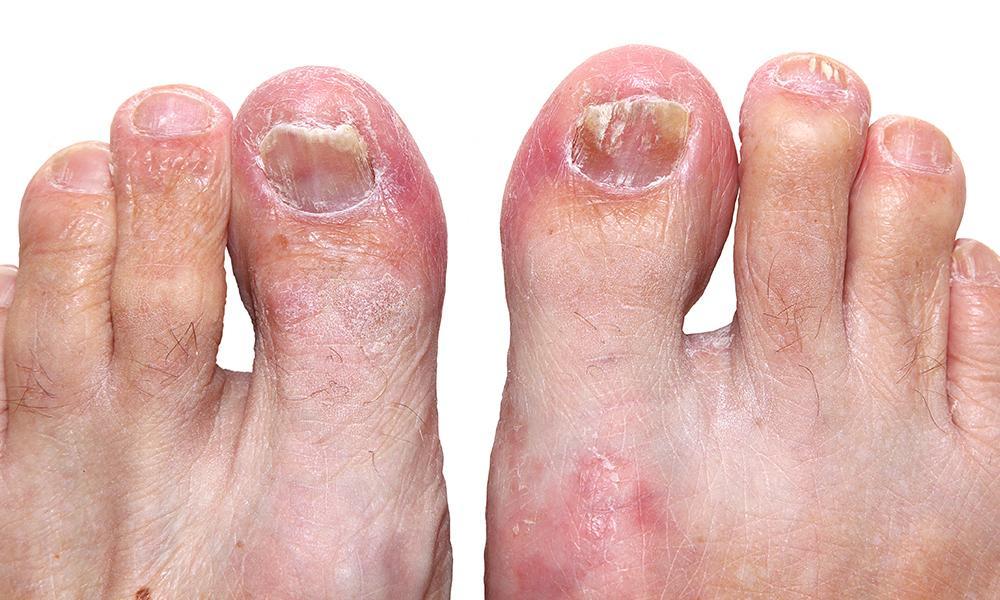
Ingrown toenails are a common yet often painful condition that occurs when the edges of a toenail grow into the surrounding skin. This condition can lead to discomfort and complications, including infection. Understanding when an ingrown toenail is likely to become infected can help individuals take timely action to alleviate pain and prevent further issues. In this blog post, we will explore the causes of ingrown toenails, symptoms of infection, and steps to take if you suspect an infected ingrown toenail.
Understanding Ingrown Toenails
Ingrown toenails usually occur on the big toe but can affect any toe. They may develop due to various reasons, including:
-
Improper Nail Trimming: Cutting nails too short or rounding the edges can encourage the nail to grow into the skin.
-
Tight Footwear: Shoes that crowd the toes can apply pressure on the nail, causing it to grow inward.
-
Injury: Trauma to the toe, such as stubbing, can lead to nail growth problems.
-
Genetics: Some individuals are more prone to ingrown toenails due to inherited nail growth patterns.
While ingrown toenails are often manageable at home, they can sometimes lead to more serious issues, particularly infections.
Symptoms of an Infected Ingrown Toenail
Recognizing the signs of an infected ingrown toenail is crucial for effective treatment. Early intervention can prevent the infection from worsening. Common symptoms of an infected ingrown toenail include:
-
Redness and Swelling: The area around the toenail may appear red and swollen, indicating inflammation.
-
Pain and Tenderness: You may experience increased pain, especially when pressure is applied to the toe or when walking.
-
Pus or Discharge: The presence of pus or a yellowish discharge from the area is a strong indicator of infection.
-
Foul Odor: Infected areas can emit an unpleasant smell due to the buildup of bacteria.
-
Increased Heat: The infected area may feel warm to the touch.
If you notice these symptoms, it’s essential to address them promptly to prevent complications.
When Does an Ingrown Toenail Become Infected?
Not every ingrown toenail will lead to an infection. However, several factors increase the likelihood of infection developing:
1. Prolonged Irritation
If an ingrown toenail is left untreated, continuous pressure and irritation can create a conducive environment for bacteria to thrive. The more time the nail edges dig into the skin, the higher the chance of breaking the skin barrier, leading to infection.
2. Open Sores or Cuts
When the skin surrounding an ingrown toenail becomes broken or damaged—whether from excessive pressure or nail growth—it creates an entry point for bacteria. This can occur from attempts to dig out the nail at home or simply from the nail pushing into the skin.
3. Poor Hygiene
Keeping the feet clean and dry is crucial in preventing infections. If proper foot hygiene is neglected, dirt and bacteria can accumulate around the toenail, increasing the risk of infection.
4. Underlying Health Conditions
Individuals with certain health conditions, such as diabetes or compromised immune systems, are at a higher risk for developing infections from ingrown toenails. Their bodies may not effectively fight off the bacteria that enter through the damaged skin.
Home Remedies and Prevention
Before an ingrown toenail develops into an infection, there are several steps you can take at home to manage the condition:
1. Soak Your Feet
Soaking your feet in warm, soapy water can help reduce swelling and alleviate pain. Adding Epsom salts can further enhance the soothing effect.
2. Keep It Clean and Dry
Make sure to clean the affected area gently and keep it dry. Apply an antiseptic ointment to help prevent infection.
3. Wear Appropriate Footwear
Choose shoes that provide ample room for your toes. Avoid tight-fitting shoes and socks that can exacerbate the problem.
4. Trim Nails Properly
If you suspect an ingrown toenail, take care when trimming your nails. Cut straight across and avoid rounding the corners to minimize the risk of future ingrown toenails.
5. Seek Professional Help
If home remedies do not alleviate the issue, or if you notice signs of infection, it’s important to consult a healthcare professional. They can properly assess the condition and provide treatments that may include draining pus or, in severe cases, removing part of the nail.
Medical Treatments for Infected Ingrown Toenails
When an ingrown toenail becomes infected, medical intervention may be necessary. Common treatments include:
1. Antibiotics
If there is an infection, a healthcare provider may prescribe antibiotics to eliminate the bacteria causing the infection.
2. Partial Nail Removal
In some cases, a doctor may need to remove a portion of the ingrown nail to allow the area to heal properly. This procedure is typically done under local anesthesia.
3. Surgical Options
For chronic cases or severe infections, surgical options may be explored. This could involve more extensive removal of the nail and surrounding tissue.
When to See a Doctor
It’s crucial to seek medical attention if you experience any of the following:
-
Symptoms of severe infection, such as fever or increased swelling
-
Persistent pain despite home treatment
-
Signs of spreading infection, including red streaks leading away from the toe
Conclusion
In conclusion, ingrown toenails can lead to infections if not managed properly. Being aware of the symptoms and understanding when an ingrown toenail may become infected is key to preventing complications. If you’re experiencing issues with an ingrown toenail, especially in Scottsdale, AZ, don’t hesitate to consult a healthcare professional for guidance and treatment options. Taking proactive steps can ensure your feet remain healthy and pain-free. Remember, timely intervention can make all the difference!